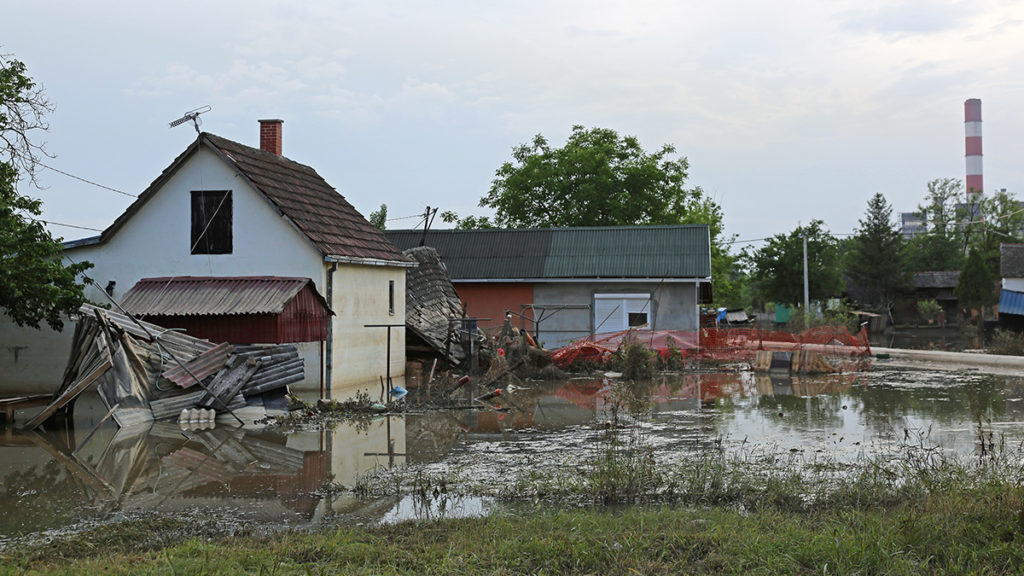Why It’s Smart to Buy Private Flood Insurance

Before you got the keys to your new home or business, you were probably made aware whether or not your property was located inside a FEMA-designated flood zone. If so, the government likely required that you buy National Flood Insurance Program (NFIP) coverage. If not, you might conclude that it’s okay to take a risk and go uninsured. However, flood insurance needs are rarely this black and white.
Because flooding occurs in 90% of all U.S. natural disasters and causes billions in damages every year, there is no reason to believe you’re in the clear if your property is located in a lower risk zone. Flood-induced damage is very common even outside predicted danger areas, and because typical home insurance doesn’t cover flood damage, it makes sense to seek peace of mind. After all, just one inch of water can cause thousands in damage.
There are many reasons you might want to purchase a private policy outside of mandated insurance. But first, it helps to understand the difference between flood insurance policies. Let’s look at five key differences between NFIP and private coverage.
1) Availability
While more than 22,000 communities participate in the National Flood Insurance Program1, many do not. NFIP insurance is offered in high-risk areas for 50 states and many territories. Without it, most federally backed lenders will not issue a mortgage. If you’re outside these zones, optional private flood insurance is available to fill the gap. On the other hand, private insurance companies might elect to limit coverage for high-risk areas. Therefore, the policy you end up with is sometimes dictated by this range of availability.
2) Costs
National flood insurance is often considered cost-controlled and affordable to a wide range of households and businesses. With flood insurance from NFIP, there’s the advantage of not needing to shop around for the lowest rate.
However, the recent rise of private flood insurance has dozens of companies competing to offer better prices and services. Because you have choices when it comes to private insurance, you can compare policies and find the one that best suits your needs and aversion to risk.
3) Coverage
Currently, NFIP coverage for a building is capped at $250,000 and $100,000 for the building contents.2 While this might be adequate coverage for some owners, homes that exceed this threshold might not be fully covered when disaster strikes. Be aware that content coverage is typically purchased separately, with separate deductibles.
Private flood insurance offers coverage that’s often much higher than NFIP polices. Thanks to recent legislation, lenders in high-risk areas should be allowed to accept private insurance with more comprehensive coverage. Private insurance coverage is also generally more easily tailored to your needs with options for supplemental coverage.
4) Wait Times
Let’s say hurricane season is around the corner and you’re getting nervous. You understand that floods can be devastating. Perhaps your new community sustained millions of dollars in damage during a previous storm season. If you purchased a policy through NFIP, the waiting period for a policy to take effect is 30 days. With a private policy, you may be able to cover your precious new home and belongings within 15 days of paying your premium.
5) Stability
Established by Congress in 1968, NFIP insurance composes the majority of flood coverage in the United States. The program has currently lapsed 4 times, and during a lapse in June 2010 it’s estimated that “over 1,400 home sale closings were cancelled or delayed each day.”3 Technically NFIP cannot cancel your coverage like private insurance if you are deemed too high a risk, but the future of the program is not guaranteed.
The expansion of private options for flood coverage was written into law to offer viable alternatives to the more common government-backed program. With these legal private alternatives accepted by many lenders, it makes sense to investigate options to NFIP insurance if they are available to you.
At Answer Financial, we want you to understand that you have flood insurance options outside of NFIP. Call 1-800-258-5101 to talk about flood protection with one of our insurance experts now!
Who is Answer Financial?
As one of the nation’s largest and most reputable auto & home insurance agencies, Answer Financial has insured nearly 5 million homes and vehicles. We work with 40+ top-rated carriers to save our customers an average of $565 a year on insurance.*
On our mobile-friendly website, shoppers can quickly compare rates and customize coverages from multiple home insurers in minutes. By simply entering your zip code and home address, Answer can search publicly available records like square footage and year built to deliver side-by-side comparison quotes from reputable insurance companies.
Answer Financial can help you compare, buy and often save the smart way on insurance. So before you shop, remember to rely on your insurance experts to find you the right home insurance plan for your needs and budget.
August 6, 2024
Sources:
- FEMA, “NFIP and Levees: An Overview,” https://www.fema.gov/sites/default/files/documents/fema_nfip-levees.pdf
- FloodSmart, “Flood Risks and Costs,” https://www.floodsmart.gov/flood-insurance-cost/terms
- FAS, “What Happens If the National Flood Insurance Program (NFIP) Lapses,” https://fas.org/sgp/crs/homesec/IN10835.pdf
